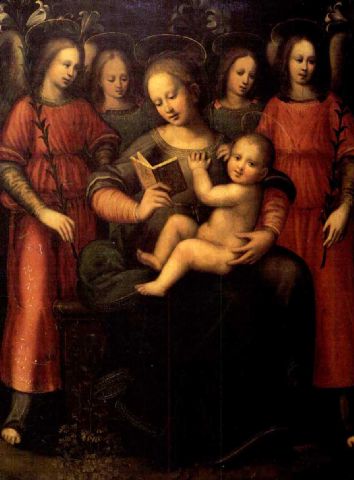During the Middle Ages, European women were looked down upon by men and placed near the bottom of the societal scale. They were to obey their fathers and husbands, even as grown adults. Most women took on the duty of maintaining their households and caring for their children, but some roles did differ based on their social class. Wealthy woman had help cooking and cleaning from servants, which allowed them time to develop other skills, such as art and reading. Women in the middle class were allowed to assist the men in their family by helping them run their businesses and working in the fields. Women who lived in poverty had to maintain their living spaces and focus on their families needs as well.
Throughout the Renaissance, women made small steps into advancing their roles in society. Those in the upper class had a better chance at maintaining an education and using it to have a bigger part in their family businesses. Either way, women were not allowed to live independently. Those who did not marry or live with a male member of their family were forced to join a convent and received an education there instead. Although there were some benefits during the Renaissance, they didn’t last long as young women were to focus on their education until they married, therefore taking on the roles of a housewife and raising their children. Once they became widowed, a majority of wives had their husbands businesses taken away from them, as women were unable to have control in the work field at the time.
 |
| Madonna con bambino e quattro angeli by Plautilla Nelli. This painting made during the Renaissance displays the role of women during that time, which involved taking care of their family first and finding their own time to focus on their education. |
As time progressed, women were still considered inferior to men, but they were granted more freedom in education and work. During the Reformation, marriage had become more meaningful, as women had more help in the household from their husbands. Women also gained more experience and knowledge with art and literacy as they were expected to teach their children from a young age. In the 18th century, there was a change in agriculture which brought many wives and their families out of poverty and led to the Industrial Revolution where women worked away from home in cottages and factories, gaining more independence and financial freedom. In the 19th Century, women had the power to use their voice for the idea of equality. They became less traditional and protested for stronger roles in society. Throughout the centuries, female artists expressed their views and struggles of gender roles and sexism through their paintings as they were silenced by men during these times.
 |
| Mary Cassatt. Woman in Black at the Opera. 1880. |
In Chapter 8, Louisa May Alcott highlighted the impressive artistry from Mary Cassatt, whom she believed was overlooked because of her femininity, stating, “...being very lively and and a woman of real genius, she will be a first-class light as soon as her pictures get a little circulated and known.” (Chadwick, 230) Her comments represent the struggles female artists faced from male expression, which gave them a hard time using their art for a career. Similar to this, artist Rosa Bonheur “often dressed in men’s clothes, although she maintained that she did it “not for originality’s sake, as too many women do, but simply to facilitate my work.” (The Guerrilla Girls, 47-48) Both female artists used their works to block out the power and sexist views of male artists by becoming “male artists” themselves, as Bonheur dressed masculine to draw the attention away from her and onto her work. Likewise, Cassatt painted women in a non-traditional manner (as shown above) and put her career as an artist first, rather than her personal life. This allowed them to showcase their paintings in a different light through the idea of gender roles and pave the way for other female artists.
 |
| Edouard Louis Dubufe, Portrait of Rosa Bonheur 1857. Although this is a self-portrait of Bonheur, it portrays her as a strong female, showcasing her interests in art and animals. |
By Peter Merly
Works Cited:
1. The Guerrilla Girls’ Bedside Companion of the History of Western Art, Penguin Books, 1998.
2. Chadwick, Whitney. “Women, Art, And Society,” Fourth Edition. World of Art. 2007.
No comments:
Post a Comment
Note: Only a member of this blog may post a comment.